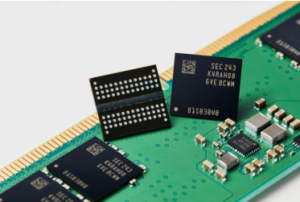Storage is used when storing and retrieving data within a computing system. The modern type of storage is solid state drives (SSDs), which have fast data accessibility speeds and lower power consumption, making them ideal for high-performance computing applications. The significance of storage in engineering is that beyond storing things such as photos and videos, it contributes to the role of running applications at a functional level and backing up data to prevent data loss, etc… This paper will explore the origin of SSD technology, tracing its development from early memory storage to modern high-capacity drives within computing systems.
Solid-state storage originated in the 1950s, with the first experiments being conducted with non-volatile memory, such as magnetic-core storage. Perhaps one of the biggest leaps forward was Fujio Masuoka inventing flash memory at Toshiba in 1980 which ultimately gave birth to today’s modern SSDs. The initial SSDs were far more expensive than the traditional hard disk drives (HDDs) and stored extremely little information. The bed of these drives was more successful than inferior in attracting consumer markets until flare store engineering was mature enough to lower product costs and increase store capacities. During the mid-2000s, SSDs started witnessing growth in consumer electronics and high-performance computing with increased read/write speeds and lower power consumption than mechanical hard disks. SSD Tech became amp stock for background computing, back consoles, and information centers, which were important for better general unit operation. Today SSDs also keep improving with the advances in PCIe and NVMe Connections, further optimizing their speed and reliability, becoming essential devices in modern computing.
Advancements in storage have transformed engineering processes by enhancing data accessibility. With SSDs and cloud storage being the latest forms of storage technology, it has significantly impacted various tech-based industries, with examples such as manufacturing and software development, enabling new technological capabilities that these industries weren’t able to reach before. When it comes to manufacturing, high-speed SSDs have enabled real-time data processing in factories, and cloud storage has allowed manufacturers to track inventory, manage logistics, and coordinate suppliers globally. For software development, storage technology like cloud storage, as mentioned, developers no longer require expensive physical infrastructure, with cloud services like AWS, Google Cloud, and Azure providing scalable storage and computing power.
With many industries relying on modern storage technology, it raises the question of what it would be like if these storage mechanisms didn’t exist. Without SSDs and virtual cloud storage services, industries would face challenges in data management and efficiency, as these systems are what keep everything running at a fast and stable rate. Technology companies like Google and their subsidiaries like Gmail and YouTube store vast amounts of user data, which is meant to be retrieved by any user globally, and without modern storage technology, everything would be slow, unreliable, and would be unable to scale globally. Overall, the absence of modern storage technologies would limit innovation and productivity, as these industries wouldn’t even exist as they can’t function efficiently without modern storage mechanisms.
Components of a Solid State Drive (SSD)

Component 1: NAND Flash Memory Chips
Description: The main storage components. It stores all data similar to a USB drive. They are non-volatile, meaning they retain data even when the power is off. Materials: Silicon wafers as a basis, and then processed with copper and aluminum memory cells. Function: Stores all data permanently.

Component 2: DRAM Cache Chips
Description: A high-speed temporary memory storage used to store frequently accessed data and metadata, improving SSD performance.
Materials: Silicone is used to create DRAM chips. Copper and aluminum are used in conductive pathways.
Function: Reduces latency by storing frequently used data for faster accessibility speeds.

Component 3: Controller
Description: The brain of the SSD. A small processor that manages data transactions between the NAND chips and the computer.
Materials: Silicone, like a small CPU; copper and gold for high-speed electrical connections; plastic and epoxy resins for packaging and insulation.
Function: Determines how data is read, written, and optimized for speed and efficiency. Ensures data integrity and encryption. Storage technologies have enabled real-time processing, automation, and large-scale computing, resulting in increased overall efficiency and decreased downtime for industries that rely on quick and scalable storage to function properly. With further advancements, it will allow technological growth and innovation across industries with their respective and various storage mechanisms that keep their systems running for people to use on a global scale.



